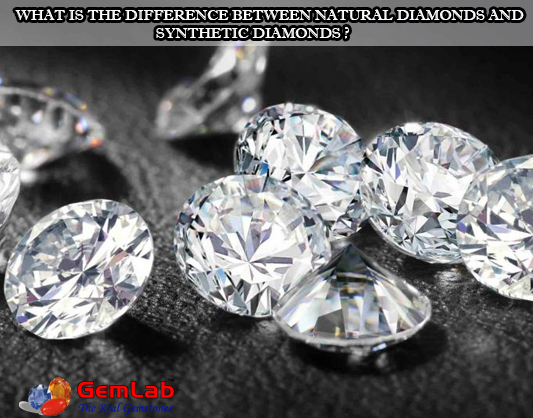gem cutting
What is the Difference between Natural and Synthetic Diamonds?

A natural and synthetic diamond looks similar to the naked eye, but the two have a characteristic difference that is visible only when they come under the microscope. “Big girls need big diamonds”; easier said than done, because it needs to be mentioned here that diamonds takes years to form, thus making synthetic diamonds a reality.
How are natural diamonds and synthetic diamonds are created?
Indeed, diamonds are made out of carbon. They have a crystal assembly. In nature, diamonds are found deep within the earth. They are created under huge pressure and temperature. It takes hundreds and thousands of years to make natural diamonds. That’s the basic difference between natural and synthetic diamonds.
Synthetic diamonds are made in laboratories. High pressure and temperature are given externally to mimic the conditions present during the formation of diamonds in nature. Synthetic diamonds are, therefore, known to be lab-grown, cultivated, created or cultured diamonds. Natural diamonds are mined through the world through the alluvial, pipe and marine mining using different types of machinery and equipment.
Difference in clarity
There is a basic difference in the clarity of both types of diamonds. Although they both are structurally and fundamentally similar, there is a basic difference in the way they appear. Natural diamonds have internal flaws in them when they form naturally. Whereas, synthetic diamonds are clear. This is because they are formed through a controlled process design to minimize defects.
Difference in color
Synthetic diamonds are available in yellow color. It is the color of nitrogen immunities during the manufacturing process. Other synthetic stones may produce blue, green or pink shades, which result from the addition of boron or because of irradiation.
Price is a major difference
Even though both the diamonds have a similar structure and fundamental composition, there is a basic difference in the pricing. As synthetic diamonds are easily available, they are less in price and are therefore often sold maliciously in place of real diamonds. Depending on the size, color, and clarity of lab-grown diamonds, synthetic diamonds can be 20-40% less costly than a natural diamond.
In a lab, a scientist will place the element carbon under high pressure and high temperature to form a diamond crystal. Another way to form a synthetic diamond would be through chemical vapor deposition. In this process, the scientist will take a small crystal of diamond and grow it layer by layer in a chamber.
Grading report
The best way to find out if the diamond is natural or synthetic is to ask the jeweler for a grading report that helps in gem authentication. The Gemological Institute of America (GIA) will indicate on the report if the diamond is synthetic or real. This report is often asked for by customers when they cannot figure out the difference between inclusions in real and synthetic diamonds.
Synthetic diamonds are not fake
Gem cutting is a process that is similar in both artificial and natural diamonds. A lot of people mistakenly assume that synthetic diamonds are not real diamonds. Although they are not formed naturally, they have the same biochemical structure and physical properties.
Three basic gem cutting styles
Some of the most popular gem cutting styles include:
Brilliant Cut:
This cut comprises of triangular and kite-shaped facets that disperse outwards from the center of the gem. It is considered to be the most dazzling of any cut.
Mixed cuts:
It comprises of both step cut and brilliant cut styles. The crown has brilliant facets and steps facets on the pavilion. Mixed cuts may even combine cabbing and faceting techniques.
Step cuts:
Step cuts comprise of rectangular facets that ascend the crown and descend the pavilion in steps. Examples of step cuts include emerald and baguette cuts. These are popular because they show off the stone’s color, clarity and produce a subtle glam.
Shape and style combination
The above cutting styles are used to speculate beautiful designs with different shapes. For instance, a square modified brilliant is a princess cut. Similarly, a square step cut beveled corners is an Asscher cut. Also, a square mixed cut is a Barion cut.
There can be variation in all shapes. For instance, a triangular gem can have many or new facets. However, the most popular of them all is the Rose cut. It is a unique style, important to the gem cutting history. It’s popularity dates back to the 16th century because of the spectacular shape it has. The Rose cut has a round, cabbed flat base and a faceted top. Triangular facets rise to form a shape like a faceted mound. While the number of facets may differ, the face-up shape is almost always circular.